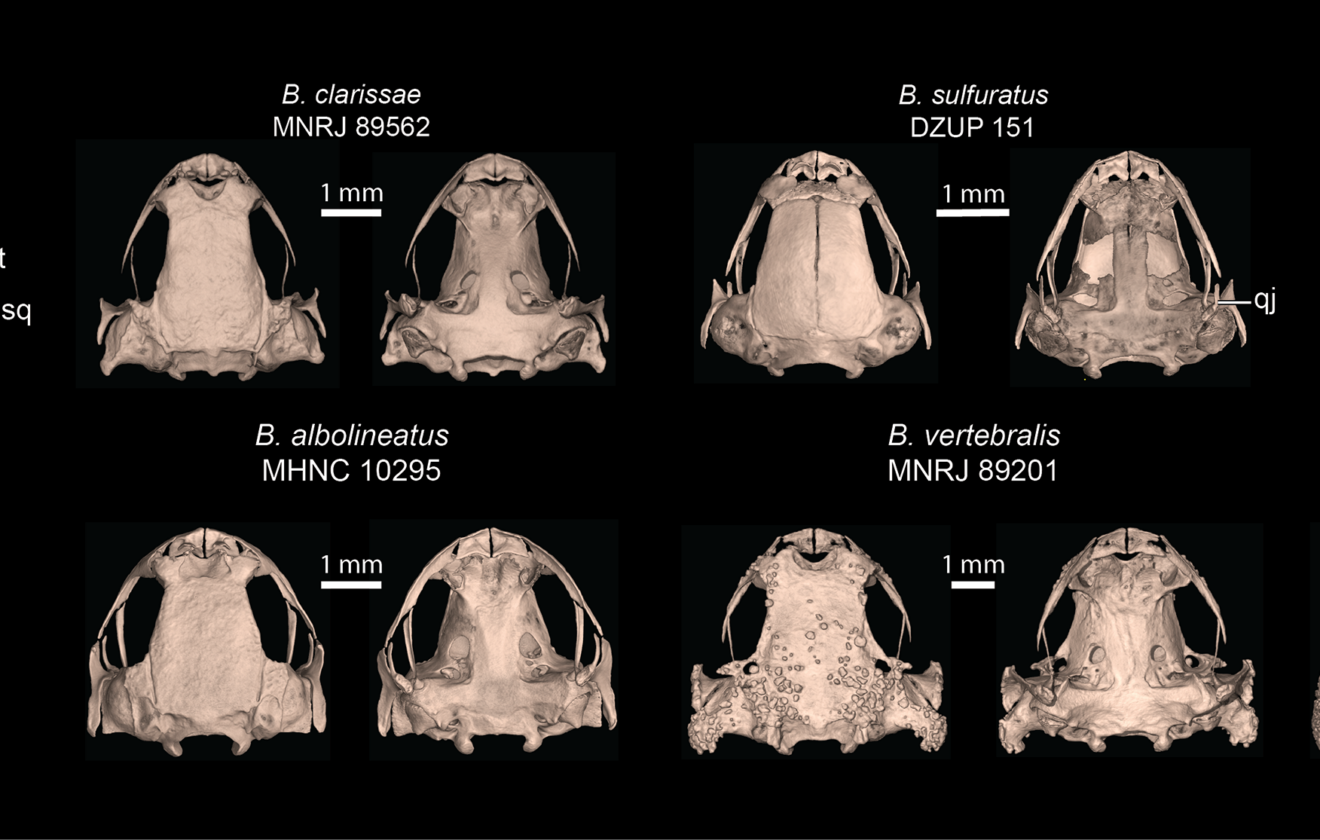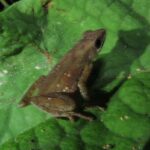Brachycephalus sulfuratus: The Tiny Golden Jewel of Brazil’s Atlantic Forest#
Hidden within the dense, mist-laden forests of southeast Brazil, a remarkable creature dwells on the forest floor—a tiny golden frog, radiant as sunlight filtering through lush canopies. This elusive amphibian, known scientifically as Brachycephalus sulfuratus, embodies a wondrous paradox: its striking, almost ethereal beauty is paired with an aura of secrecy, remaining largely hidden to human eyes amidst the vibrant leaf litter that carpets the Atlantic Rainforest.
At first sight, the sulfurous frog astounds with its exquisite charm, bearing a striking shade of golden-yellow that earned it its scientific name, derived from the Latin sulfuratus, meaning “sulfur-colored.” But beneath this sparkling exterior lies an intriguing biology, fascinating behaviors, and a critical role within its delicate ecosystem. Regrettably, Brachycephalus sulfuratus also faces increasing threats, serving as an urgent reminder of why conservation of biodiversity hotspots like Brazil’s Atlantic Forest matters profoundly to us all.
Taxonomy and Classification#
Brachycephalus sulfuratus belongs to a distinctive genus known for remarkably miniature frogs colloquially called saddle-back toads or pumpkin toadlets, referencing their compact shape and vibrant coloration. They are part of the family Brachycephalidae, a lineage notable for species that demonstrate bright yellow, orange, or even reddish hues, each species mirroring minute jewels scattered throughout Brazil’s biodiversity-rich terrain.
First described scientifically in 2016, Brachycephalus sulfuratus joined an already fascinating genus of tiny amphibians—each species occupying specific, often incredibly restricted habitats. Their close relatives include species such as Brachycephalus ephippium and Brachycephalus pitanga, each sharing similarities while holding unique ecological and behavioral differences. The precise taxonomy and the classification still garner significant scientific interest, revealing ongoing surprises about amphibian evolution and biodiversity.
Natural Habitat#
A Jewel in the Atlantic Forest#
An esteemed inhabitant of Brazil’s precious Atlantic Rainforest, Brachycephalus sulfuratus occupies highly specific microhabitats within the montane and subtropical rainforests of southern and southeastern regions of Brazil. Discovered primarily around high-altitude areas, these tiny frogs favor humid, shaded sections of montane forests above 900 meters elevation, places where dense vegetation offers adequate cover and stable conditions.
The forest floor, their domain, consists of deep layers of decomposing leaves, mosses, tree roots, and support structures that are eternally damp and temperate. Here, amidst decomposing foliage, moss-drenched logs, and the cooled earth, these miniature amphibians reside mostly unseen, camouflaged despite their vibrant coloration. Their active preference for very specific humidity and temperature ranges underlines the sensitivity of this species to environmental shifts and emphasizes the necessity of continued preservation of Brazil’s fragile montane ecosystems.
Physical Characteristics#
Golden Miniature Marvels#
The standout trait of Brachycephalus sulfuratus is undoubtedly its vibrant golden-yellow coloration—a hue brilliant enough to astonish even the seasoned naturalist. Displaying smooth, shiny skin adorned with minuscule spots, their coloration serves a dual purpose: attracting potential mates during breeding periods and simultaneously alerting potential predators to an underlying threat. Indeed, many members of the genus Brachycephalus possess mild toxins beneath their skin, making their bright color an effective aposematic signal that warns potential predators.
At an astonishingly diminutive size, adult Brachycephalus sulfuratus frogs average only 1.5 cm in length—smaller than a human fingernail. Their bodies, rounded and compact, stand perched atop short, robust legs. To the human eye, observing them maneuver through leaf litter resembles watching miniature enigmas vanish in an instant, perfectly suited in form and coloration to deceptively melt into their vibrant but shadowy environment.
Behavior and Life Cycle#
Unique Reproductive Strategies#
Beneath their golden splendor lies remarkable behavior deserving of detailed appreciation. Despite their tiny size, these incredible animals display behaviors that substantially diverge from typical frog biology. Notably, members of the Brachycephalus genus lay terrestrial eggs on damp leaf litter instead of depositing them into traditional water bodies. These eggs—the jewels of new life encapsulated in humidity-bound microhabitats—develop directly into whole miniatures of adults, completely skipping the typical aquatic tadpole stage. Such direct development is a fascinating evolutionary adaptation enabling survival in high-altitude forests where standing bodies of freshwater can be scarce or highly seasonal.
Mating calls of Brachycephalus sulfuratus, barely audible to human ears given their exceptionally high pitch and low intensity, are vital in establishing territories and attracting females. Humid, mist-laden evenings frequently witness intricate mating rituals characterized by subtle, repetitive calls and delicate movements beneath the shadowy canopy. Understanding such secretive behaviors remains challenging yet critically important, highlighting the necessity of protecting habitats that harbor such unseen marvels.
Ecological Role#
A Tiny Keystone in a Fragile Ecosystem#
The ecological significance of frogs often extends well beyond their diminutive appearance, and Brachycephalus sulfuratus is no exception. Although small in stature, their role within Brazil’s Atlantic Rainforest as predators of minute invertebrates—ants, mites, springtails, and other detritus-dwelling organisms—helps regulate these prey populations, maintaining a balanced soil ecosystem crucial for nutrient cycling and forest health.
Conversely, these jewel-toned amphibians themselves become prey to larger invertebrates, spiders, and predatory birds, functioning as integral nodes within sophisticated food webs. Furthermore, sensitive to environmental changes, they act as indicator species: any decline in their population directly signals broader problems within their delicate ecosystem.
Threats and Conservation Status#
Challenges in a Changing World#
Despite their recent discovery, habitat destruction and fragmentation pose immediate and pressing threats to Brachycephalus sulfuratus. The relentless encroachment of agriculture, urbanization, logging practices, and climate change-induced alterations in rainfall and temperature patterns severely impacts their highly specialized habitats, leaving populations isolated and vulnerable.
Currently, due to recent classification discoveries and limited field information, conservationists carefully monitor their potential vulnerabilities without yet explicit formal listing by the International Union for Conservation of Nature (IUCN). Nevertheless, the consensus among researchers remains clear: habitat preservation, restoration projects, alongside the establishment of protected areas, represent indispensable pillars to safeguard the continued existence of this species and the manifold others inhabiting the same microhabitats.
Cultural and Scientific Significance#
Ambassadors for Biodiversity: Symbolism and Science#
Culturally, frogs and toads worldwide often symbolize resurrection, renewal, and adaptation, thanks to life cycles that continually move between life-giving waters and terrestrial landscapes. Although cultural references specifically to Brachycephalus sulfuratus remain sparse given its recent recognition, emerging scientific inquiry reveals its potential to attract attention, raising awareness about biodiversity’s fragility.
Scientifically, each new amphibian uncovered represents ongoing revelations about evolution, ecology, adaptation, and even the discovery of novel compounds in their skin, potentially offering pharmaceutical insights yet to be explored. As such, tiny frogs like Brachycephalus sulfuratus, beyond their immediate biological fascination, symbolize broader scientific potential regarding natural resource protection and medical discoveries.
Conclusion#
Within Brazil’s vast Atlantic Rainforest, the golden-hued miniature frog, Brachycephalus sulfuratus, reflects profound mysteries, biological marvels, and a stark reminder of nature’s vulnerability. Appreciating such beings extends far beyond marveling at their beauty—it involves dedicated commitment to conservation and environmental education.
Each reader, each advocate for biodiversity, plays a crucial role in safeguarding this jewel and its ecosystem. By supporting sustainable practices, habitat preservation, scientific research, and raising public awareness, we enhance our collective ability to protect tiny marvels like Brachycephalus sulfuratus and, in doing so, ensure that wonders hidden within our natural world endure long into the future.








